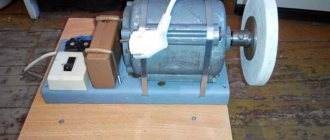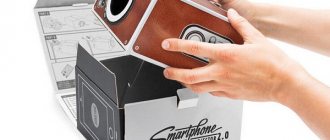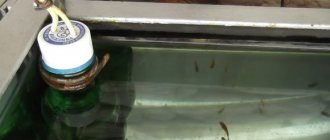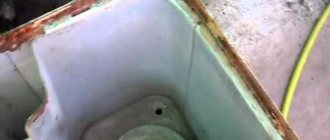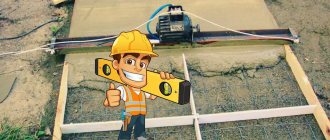The FM antenna for a music center largely determines both the number of programs received and their quality. The reception mode (monaural or stereophonic) depends on the signal strength at the input of the FM receiver of the music center. Manufacturers of music centers in their developments focus more on the high-quality sound of the output audio amplifier. The signal source for it is CD players and USB flash drives. Receiver circuits are not given enough attention. Based on this, the quality of FM receiving antennas plays a significant role. Fans of listening to FM meter broadcasts should take this into account.
Features of radio wave propagation
Before turning to step-by-step instructions on how to make an antenna yourself, it is necessary to clarify the features of radio signal transmission in the VHF and FM bands. This will help you better understand the principle and design of the antenna.
Important to remember:
- reception of a high-quality signal is possible only within visibility (for example, when a television and radio tower is visible from the window of a house);
- capturing a signal at a great distance from the broadcasting object in the evening and at night is problematic;
- precipitation weakens or completely interrupts signal transmission.
Types of antennas
Any device that receives radio waves has a sensitivity threshold. If the received signal is lower than this, the sound volume and quality will be poor. The radio wave weakens when moving far away from the transmitting station or due to deteriorating weather. This is especially true for the FM and VHF bands due to the characteristics of wave transmission. To overcome these difficulties, strengthen and improve the signal quality, any radio needs an antenna. Their design features and dimensions are determined by the range of the receiver: there are multi-kilogram antennas with coverage of thousands of square meters. km and simple homemade crafts in the form of wire above the ground.
The whole variety of antennas for radio stations is divided into directional and non-directional, as well as mobile and stationary. Directional ones work on the principle of connecting point to point or point to many points within 50-100 meters. Non-directional ones have coverage over the entire area around them.
There are also such radio antennas as:
- Rod - in the form of a regular rod or a rounded shape;
- Wire – curved in various required positions;
- On once fashionable boomboxes and music centers you can find telescopic antennas - folding structures made of metal rods, reminiscent of telescopes;
Telescopic antenna
- A retractable antenna is available on almost every car; its advantage is that such a retractable structure can be installed anywhere in the car (roof, fender, etc.), the receiving element is a removable rod with anti-noise winding, which allows you to make the radio sound clear and loud even at high driving speeds. The rod goes into a plastic casing, where there is a stainless steel spring, which retracts the antenna into place when it is deflected in the direction of travel.
Regardless of the type or type of radio antenna, their operating principles are the same.
Note! Quite often, the quality of a radio signal does not depend on the type and condition of the antenna for a radio receiver or music center, but on the technical capabilities of these devices themselves with their receiving chips.
The best music centers according to experts
Music center LG OK65 on Yandex Market
Music center LG OK99 on Yandex Market
Music center Sony MHC-V21D on Yandex Market
Music center LG RK3 on Yandex Market
Music center Hyundai H-MC120 on Yandex Market
In order to listen to FM stations in Nizhny Novgorod, I bought a push-button cell phone for 500 rubles texet TM128. It works for me without a battery (from a 4.1 V stabilizer), without a SIM card and headphones. I soldered two MLT-0.5 47 ohm resistors to a Chinese (unfortunately) plug, the phone was very angry at first (“turn on the headphones”), but then I taped the plug with blue electrical tape directly through the buttons and screen to the phone and everything worked, ears from the resistors are a good antenna. Then I soldered the two ends (3 meters from the old razor, without a screen) to one resistor and connected it through a five-pin connector (pins 2-3) to the Radiotekhnika U 101 stereo amplifier through any 200 mv input. The amplifier is connected to 11 speakers in one jack, connected in series, about 50 ohms in total. They are located throughout the apartment. Since the automatic frequency control of the TM128 is excellent, everything sounds at the highest level (if there are fewer speakers, it will be louder). I adjust the volume directly on the phone (with the two bottom buttons). Auto-tuning is turned on after selecting “Radio”, pressing the central button and after 3 seconds it goes up. If the Chinese three-pin 3.5mm plug does not connect or keeps coming out of the socket, then you need to insert a cardboard washer (choose the thickness) and then secure it with electrical tape. Twist the plug, leave the phone on a soft towel, if the contact does not disappear, it will work for 100 years. Read my poems on poetry ru. I've never had a smartphone, so I can't say anything about it. With a smile Kutyrin Yuri NN.
Indoor antenna for VHF*FM radio, on a Rexant suction cup.
Antenna amplifier for music centers Triad 8810 /.
Triad 8810, Black White antenna for music centers.
Antenna amplifier Triad-8840 for music centers.
Antenna VHF, FM Triad 8830
Antenna options
All types of radio antennas can be divided into mobile and stationary, they can also be directional and non-directional.
Directional ones are characterized by orientation to a specific point (signal source) in space; they operate over short distances (50-100 m). Omnidirectional are focused on the signal over the entire surrounding area.
The antenna can also be rod, wire or telescopic. The latter is a folding structure reminiscent of a multi-legged fishing rod. Such models are often found on tape recorders, stereo systems, and cars.
Whatever the type of antenna, the principle of operation of the devices is the same.
Additional recommendations
Please note that sound quality largely depends on weather conditions. During snowfall, rain or strong winds, the signal may be intermittent or simply disappear.
You can improve the sound in the following ways:
- point the antenna at the signal source (the rod variety is best suited for this purpose);
- place the receiving device at the highest point of the house to compensate for the terrain;
- expand the range of received frequencies by changing the dimensions of the circuit or the length of the rod.
Important! It is not recommended to use the FM connector to connect a TV antenna. This can lead to short circuits and equipment failure.
There are many different options for making antennas, distinguished by their simplicity and practical efficiency. You can create models both for receiving waves of a certain length, and devices with a wider spectrum. But it is not always possible to achieve high-quality sound, regardless of the design created. Often, budget music centers are not able to improve signal reception, despite the measures taken.
FM antenna design for receiver
Such antennas are designed to convert radio waves in the FM range into electrical signals perceived by the receiver. The simplest designs are a vibrator, half the size of a wave. Such antennas do not have directional properties and perceive too much interference radiation from the surrounding space. If the FM receiver is mobile, you can, by making some movements, find the best direction of the signal. For stationary receiving radio devices, a wave channel tuned to the broadcast receiving beam is more suitable, while the best sound quality will be on a couple of channels (mostly radio stations of this type broadcast in a range of about 10 megahertz).
Additional Information . If it is necessary to expand the radio broadcast beam, you can connect 2-3 half-wave vibrators in parallel in a vertical position and solder them onto round cylinders.
The required 50 ohm resistance is not always achieved; such an FM antenna must be amplified with devices for matching. Thus, vibrators can be mounted on cone-shaped guides, representing a fan, “opened” from the center to the borders.
FM antenna fanning out
When using steel and sheet metal in construction, it is possible to obtain even 300 ohms. Thus, it turns out to receive a fairly large number of FM channels. To further expand reception in this range, it is sometimes necessary to assemble and connect an antenna array.
Antenna connection
The antenna for the radio receiver is connected in several ways:
- Direct: the antenna (usually telescopic antennas) is an integral part of the receiving radio device, while the “ground” phase is its body itself. The (active) resistance with such a connection reaches thirty ohms, and the reactive one is removed by altering the resonance circuit. Such antennas are not symmetrical. The grounding must be reliable (the length of the bare wire must exceed 1/10 wavelength), otherwise interference due to loop radiation is possible;
- With non-resonant power supply: a transmission line is used for directional transmission of radio waves, and its characteristic impedance must be equivalent to the antenna impedance. This connection allows you to get rid of losses and provide the best radio signal level;
Important! The excess cable between the FM antenna and the radio receiver should be cut, because each additional meter greatly reduces the receiver's sensitivity. After matching the resistance, bringing it closer to 50 Ohms, radio signal reception improves significantly.
- With the resonant type of power supply of communication lines, the ease of passage of radio waves directly depends on the length of the wave itself. For such antennas, feeders of half the wavelength (or multiples) are chosen, and the wave resistance is no longer so important, the antenna is matched. The frequency that an FM antenna perceives is the carrier frequency, quite often these are sine waves with a leading frequency of 50 hertz (harmonics).
Homemade antenna
Anyone can do it; for this we need a few simple tools that are available in every home:
- A piece of copper wire.
- An ordinary kitchen knife.
- Pliers.
Note that not in all regions of our country the FM signal stably covers the entire territory. In some remote locations, the conventional built-in antenna of a music center is not enough. In this case, device owners begin to try to strengthen the signal on their own. Most often you can see a standard FM antenna wrapped in wire. In other cases, this wire is placed outside the window (for example, through an open window), in the hope that it will somehow strengthen the signal. Indeed, such practice often helps, and the radio still manages to be picked up.
So, let's take a closer look at how to make such a standard antenna amplifier with your own hands. This is done in stages:
- Take a piece of copper wire.
- Measure the length you need and cut using pliers or wire cutters.
- Now strip the cut piece of wire using a regular knife.
- Next, you should securely tape the cleaned wire to the existing antenna and try to catch the signal.
If significant improvements have not occurred, then you should pay attention to the back of the music center. In the area where the plug sockets are located, there is often a so-called input for additional antennas. Some manage to amplify the signal by inserting a wire into this socket, but it is worth noting that such a practice can lead to unstable operation of the device as a whole, and sometimes to breakdowns. Moreover, the effectiveness of this method seems very doubtful.
If amplification with a wire-type device does not help, you can try to assemble a rod antenna. It is highly directional and more resistant to urban interference. Most often, it is made from an existing old television antenna, taking into account the fact that some television broadcasting frequencies have shifted or even switched to online or satellite broadcasting.
A directional whip (rod) antenna consists of a power element (boom), two passive directors, a loop vibrator and a reflector. Its size directly depends on the range in which the signal is received.
In order to make it yourself, you need:
- Secure the load-bearing structure to the outside of the building.
- Plug the wire into the corresponding socket of the music center (to make it you will need a plug for the corresponding socket and the ability to work with a soldering iron).
- Search for radio stations.
Of course, there are options for homemade antennas with a more complex manufacturing algorithm, but their assembly will require much more skills and time. Wire and whip antennas are the simplest options available to any user when it is necessary to improve the signal using improvised means.
How to make a radio antenna
If you have a technical mind and skillful hands, you can assemble a completely working radio antenna with your own hands. To do this you will need the following simple tools:
- a small coil of purified copper wire or metal foil;
- sharpened knife;
- pliers/cutters.
In the easiest case, you can take a ready-made television antenna and simply solder the connectors for the TV to those needed for the radio.
A homemade antenna for the VHF and FM bands can be constructed from the most ordinary foil or a piece of wire, only the sizes will vary.
The simplest indoor wire radio antenna
A homemade FM antenna is constructed on a dried board 15 by 15 centimeters using a sheet of foil 13 by 13 centimeters, thickness 15 mm (can be made up of several “shreds”). The algorithm of actions is as follows:
- on the foil we cut a square with a side of 1 decimeter, we get a frame;
- a 3 mm thin rectangle is separated from below;
- glue the resulting square frame onto plywood or a board to give the future antenna strength;
- to connect a shielded cable (its resistance is from 50 to 75 ohms), attach the central core of the antenna with a soldering iron to the bottom right;
- the screen is attached in the central part, shifted to the left by 2.5 cm.
For antennas in the VHF range, a plate is taken with a side of at least 18 centimeters, a foil square with a side of 15 and a half centimeters, and a frame thickness of 1.8 centimeters.
Not all FM radio signals have full coverage, which can be picked up by the built-in antenna. Signal amplifiers for an existing or self-made radio antenna come to the rescue. Sometimes it is enough to simply wrap a standard antenna with copper wire and bring its end out into the window. This tactic helps make the radio signal a little stronger, but does not improve the sound quality. In this case, the end of the wire must be carefully cleaned with a knife. Some radio enthusiasts insert their additional wire antenna into the socket on the rear panel of the music center, but this can damage the receiver and even short circuit the home network.
If the wire turns out to be powerless, you can design a rod-type antenna, which, being highly directional, better resists urban radio noise. The antenna-pin is made up of an arrow that acts as a power element, a pair of passive receiving devices (directors), a loop-type vibrator and a reflector-reflector. The dimensions of such a directional antenna are determined by the range to which the radio receiver will be tuned.
The whip antenna is assembled according to the following plan:
- a power structure is mounted on the façade of the building;
- into a pre-prepared socket on the radio/music receiver. a wire is inserted in the center;
- The found radio transmitting stations are configured.
More complex amplifiers of FM radio signals require solid knowledge and skills. Despite such efforts, waves can sometimes disappear at night (due to the lack of long-range perception of radio waves) and under unfavorable environmental conditions (rain, strong wind, heavy snow).
Algorithm for making a homemade FM antenna
Before starting work, the master will need to prepare the following materials and tools:
- copper wire, stripped of insulation;
- knife;
- pliers.
The finished device will act as a standard amplifier and be attached to the factory antenna. As a rule, this is enough to obtain a high-quality signal.
The manufacture of an FM antenna occurs in several stages:
- Measure out a coil of copper wire of the required length.
- Cut it off with a knife or bite it off with wire cutters.
- Clean the surface.
- Wrap the wire to the existing antenna.
- Having caught the signal, fix the device. In this case, to improve the sound, the wire can be placed out the window.
Important! Many stereo systems have additional antenna inputs. By connecting a homemade device to such a connector, you can change the quality of the received signal. However, this measure is not always effective and can even lead to damage to the device.
DIY pipe antenna
The main supporting element of this radio antenna is heating or water pipes. Required materials for creation:
- used transformer core (from an old TV);
- electrical tape, tape, office glue;
- foil made of thin copper or brass;
- one and a half meters of copper wire (diameter ¼ sq. mm);
- connecting pins.
For winding, the first layer is a ferrite core, a couple of layers of electrical tape on top, followed by a single foil layer. Exactly 25 turns of wire are wound onto such a screen blank with an overlap of 1 centimeter for better contact insulation. You should remember about the mandatory taps on turns No. 7, 12 and 25. The circuit is connected to other parts, and the ends of the wire are inserted into the pins. The tap from the 7th turn is inserted into the grounding socket, and the remaining two are connected to the antenna terminals.
The final stage is setting up the radio signal reception; this is done by simply selecting the connection of the winding to the connected circuit. Such homemade radio antennas reliably receive a signal even in a severe thunderstorm, thanks to reliable grounding.
If the radio receiver is located in an area where the reception is very weak and of poor quality, you can assemble an omnidirectional antenna yourself using a coaxial cable. For this you need:
- wooden slats;
- one and a half meters of cable (television cable is best);
- one and a half meters of PVC pipe (section diameter 2 cm).
Homemade antenna from coaxial cable
Constructing such an antenna is quite simple. A cut is made on the wire to remove the insulating layer (but the braid must remain intact, this is important!). Having loosened and slightly stretched the braid, the screen is turned out to the place of the cut. The final stage is to install and securely fasten the antenna inside the plastic tube and mount it on a wooden rail. The adjustment to search for a radio station signal is made in the vertical direction, and not by rotating the homemade antenna 360 degrees.
In dachas, in cars, even in urban built-up areas, those who like to listen to the radio are well aware of the problem of a weak signal and quiet sound of radio transmissions, especially in the FM range. Antennas for radios of various types and types of signal reception help correct the situation. They can be purchased in special stores, or you can make them yourself; fortunately, the technology is simple, and the parts can be bought at any radio market.
Antennas for a radio station: general manufacturing principles and instructions
If the receiver does not work fully with the existing built-in antenna, then a homemade indoor radio antenna that amplifies the signal can be the solution. The device is placed at the maximum height to avoid possible interference with operation.
Before you make your own antenna for a car radio or other equipment, you need to take into account an important fact: to receive a radio wave, its polarization is important. Devices for FM signals should be positioned vertically, following the type of wave itself.
A do-it-yourself FM radio antenna is quick and easy to make if you prepare all the necessary tools and parts in advance. The simplest option is a pin one. To do this, take any material that conducts current and install it vertically. The lower part is connected to the receiver.
The amplifier allows you to receive even the weakest signal
When creating an antenna, you need to strive to ensure quiet operation
Antenna for the receiver: what materials are required for work
To make a good FM receiver, you need to think in advance about what it will be made of.
A do-it-yourself car radio antenna is assembled from the following components:
- tube with heat shrink function;
- high voltage wire;
- PVA glue;
- ruler;
- compass;
- wire for unwinding - PEV.
The antenna must be assembled strictly according to the instructions in order for it to catch the signal well.
Simple, affordable materials are used to make the antenna
It is recommended to choose an aluminum bracket
FM antenna amplifier
An FM antenna for a music center can be made with your own hands in a few hours if suitable parts are selected in advance. In addition, you should definitely understand the principles of operation of the equipment, only then the design will be working.
Outside the city, communication is much worse than within a populated area, but you can improve its quality by installing an antenna for a VHF radio receiver with your own hands.
To compensate for losses when receiving a signal, you need to raise the device as high as possible. The antenna amplifier most often works even in the most hopeless cases. Signals below 60 Hz are filtered out and only high signals are received.
To make such an amplifier, you need to use two coils. They are wound using a PEL wire to the antenna. To ensure operation of the device, it is necessary to connect a current of at least 12 A. All connections are secured using a shielded cable.
If after installing the antenna the signal on the device is very weak, you can raise the amplifier higher
It is necessary to provide amplification on the VHF band
FM indoor antenna: linear
To get a good signal you need an FM radio antenna, which is not always easy to buy. If the model you need is not on sale or you don’t want to spend extra money from the family budget, you can make a device for receiving the signal yourself from scrap materials.
| Illustration | Description of action |
| Take a simple TV cable | |
| Carefully remove the top layer - insulation. It is important not to damage the shielded cable. | |
| Tightly twist the central wire and the silver layer | |
| We retreat 22 cm from the beginning of the bare layer | |
| Cut out a small piece of the top layer and the shielded part. We try not to damage the inner layer | |
| We retreat another 22 cm from the treated area. | |
| We remove only the outer insulation, leaving the shielded part intact | |
| Take the end of the bare wire and bend it, winding it to the center | |
| You should get a round antenna with a “tail” | |
| We take a wooden or cardboard blank that follows the shape of the wire, and wrap the structure with electrical tape | |
| We place the antenna with the wire to the window, and, if necessary, raise it higher so that the signal can be transmitted |
TV cable can be purchased at any radio store. If you need a telescopic antenna for a radio receiver, it is also not always possible to buy it, so it is better to use the instructions for making the device yourself.
Antenna for radio in car
A simple VHF antenna amplifier for a car can be made in ten minutes. The telescopic flexible antenna is made from special materials and radio components. Homemade devices can break down just as quickly as store-bought ones, so before you install an antenna in your car for the radio, you need to choose a suitable location for it.
It is also possible to manufacture a solid antenna, which will require: copper wire, cable, metal pin for mounting the structure, tools for working with metal, soldering iron and insulators.
When choosing a metal pin, you need to pay attention to the thread - it must fit the size of the bracket. It is best to use ready-made anchor bolts, which can easily secure any structure.
The next step is to prepare the space inside the car. The casing is removed where the antenna will be installed, then the cable is laid and secured. You must act carefully so as not to break the holders and clips.
If the dimensions of the head unit and antenna do not match, it is recommended to resolder the connector, but you can use an adapter. The operation of the receiver is checked, after which the structure can be assembled and the panel closed. If a homemade antenna is assembled correctly, it will work well, regardless of external circumstances.
Antenna with copper wire
To connect TV or radio, you need to ensure that the wave frequency is sufficient. For this, both purchased and homemade antennas are used. One option is a device assembled from copper wire. To do it, you need to follow the instructions.
| Illustration | Description of action |
| To work, we take a small coil of copper wire, wire cutters, a plug from a regular television antenna, scissors and a cable | |
| Straighten and smooth the piece of copper wire so that there are no extra folds left | |
| We round the wire so that we get a perfect, even circle. | |
| Take a soldering iron and solder one piece of cable to another | |
| We solder the other end of the wire to the second section of the cable so that the shape of the circle of the future antenna is preserved | |
| To prevent the sealed areas from coming off, cover them with electrical tape. We bend one end of the wire, after which the entire area with exposed wires is wrapped | |
| Connect the plug to the second end of the television cable | |
| We press the braid well with pliers so that it does not jump off | |
| We throw the antenna out the window, and connect the plug to the TV, after which we try to turn on digital channels |
Making a digital TV antenna from copper wire is very simple, but you need to make sure that all the given steps are followed correctly. If the device does not work, then it may not be assembled correctly, or it may simply need to be raised higher.
Industrial products
Today you can choose an FM antenna for a music center from a wide range of products. Most of them are intended to be placed indoors (room).
Products most often represent half-wave dipoles, ergonomic rectangular frames, vertical telescopic pins with the ability to manually change the length of the vibrator. There are active FM antennas for a music center. Their use in residential settings most often leads to the amplification of numerous reflected signals.
To receive FM radio stations in rural areas or cottages, preference should be given to narrowly directed multi-element active antennas of the “wave channel” type. They are not widely represented and their price can reach several thousand rubles.
Tools and materials
It should be said that there are a huge number of options for creating antennas. They are made from copper wire, and from a tube of capacitors, and from wire, and even from a television cable. And this is not a complete list of materials from which an antenna can generally be made. If we talk about materials, then to create an antenna you will need to have the following elements on hand:
- heat-shrink tubing;
- winding cable type PEV-2 0.2–0.5 mm;
- high-voltage wire or coaxial cable;
- ruler;
- nest;
- calipers;
- glue for plastic.
This is a rough list of materials and may vary depending on the materials you have on hand. In addition, it will not be superfluous if before this you develop a diagram of the device that you will make. Device drawings allow you not only to determine what dimensions are needed to receive a particular wave range, but also make it possible to correctly calculate the necessary parameters of the device itself - type, length, width, some design features. In addition, you can immediately roughly determine the place where to solder the socket, if necessary.
Step-by-step instruction
Here are a few instructions for creating antennas, each of which will help you make a really high-quality FM module for receiving radio waves. So, to make such a device, you must adhere to a certain algorithm of actions.
- Take any high frequency coaxial cable. We dismantle its braid and remove the outer insulation. You can also use high-voltage wires from transformers of the same name, which are used in monitors and televisions equipped with a cathode ray tube. They have greater rigidity and will be an excellent option for receiver antennas.
- Now you need to cut a piece measuring 72 or 74 millimeters from the prepared wire. Moreover, accuracy must be maintained down to the millimeter. Using a soldering iron, we solder a small piece of wire to the cable, from which a coil will later be wound from a suitable piece of plastic. The wires will need to be wound about 45 turns. In this case, a piece of internal insulation with a length of 1.8 centimeters will be used. If desired, you can recalculate the coil for a different diameter. But you need to observe 2 points:
- the length of the coil will be 18 millimeters;
- the inductance should be 1.3–1.4 μH.
- Now we carefully wind 45 turns. Once this is done, you can see the gaps on its end sides. You will need to pour a little glue into them to make the structure stronger.
- At the next stage of antenna assembly, you need to put a heat-shrink tube on the resulting structure. It should be heated by some convenient method. But it is best to do this using a closed fire, or you can use a hair dryer.
- If you need a loop antenna, then its special feature is the presence of an aluminum hoop. Its diameter is 77 centimeters, and the internal diameter should measure 17 millimeters. You can easily find such an element in any sports store. You should also have a copper tube on hand. If such an antenna is required, then the central core, braid, and also a small piece of coaxial type wire should be soldered to the contacts of the variable capacitor. We solder the second end of the wire, the central core and the braid to the above-mentioned aluminum hoop. You can also use car clamps, which should be thoroughly cleaned first. Their diameter should be from 1.6 to 2.6 centimeters. You should also do a good cleaning of the contact area.
- The ratio of the circumference of the frame to the circumference of the communication loop should be 1: 5. In addition, 1 centimeter of insulation should be removed from the tip of the cable and from the central core. And also from the middle of the cable for the FM antenna, you should mark 5 millimeters in both directions and remove the external insulation. After this, we remove the cable braid to break it.
- Now you should check the range of the antenna and make sure that the frame has resonance in the range of 5–22 MHz. If the capacitance of the capacitor is different, then these parameters can be changed. If you need low-frequency ranges, then it is better to take a frame with a larger diameter - one or one and a half meters. If we are talking about high frequencies, then a frame of 0.7 meters will be enough. This completes the creation of the loop antenna.
2
A rather interesting option would be a pipe or magnetic antenna. By the way, it can be not only internal, but also external.
The main load-bearing part of such a device will be a heating pipe or water pipe. To make an antenna of this type, you will need to have on hand the following elements:
- a used transformer core that can be removed from some old TV;
- insulating tape;
- glue;
- scotch;
- foil made of thin brass or copper;
- about 150 centimeters of copper wire with a diameter of a quarter square millimeter;
- pins for connection.
First, to wrap the first layer, a core made of ferrite is laid, and on top there are 2 layers of electrical tape, followed by a single layer of foil. Now 25 turns of cable with a 1-centimeter overlap should be wound onto this screen blank so that the contact insulation is the best. And also we should not forget that it is necessary to make mandatory taps on the 7th, 12th and 25th turns. The circuit should be connected to other parts, and the ends of the wire should be inserted into the pins. The tap from the seventh turn should be inserted into the grounding socket, and the other 2 should be connected to the antenna terminals.
The final stage of work will be to set up radio signal reception. In this case, it will be carried out by the usual selection of a winding connection to a connected circuit.
Another fairly common and simple option for creating an antenna of this type is a device made of foil. To create it you will need the following materials:
- wire cutters or pliers;
- knife;
- a roll of foil or copper wire;
- dry board in the form of a square that has a side measuring 15 centimeters.
There is nothing difficult in creating such a device. To make it, you will need to follow several steps.
- First, cut a square out of foil. It should measure 13 centimeters on the outside, and the width of the foil strip should be 1.5 centimeters. A 3mm rectangle should be cut out at the bottom center to allow the frame to open.
- The cut piece of foil should be glued to the board. Now you need to solder the inner rod of the shielded wire on the right and the braid on the left to the square of foil. This must be done with a slight shift to the right from the central slot - about 2.5 millimeters. By the way, the distance between the shielded wire and the braid should be the same. Here it must be said that if the antenna is used to operate in the VHF range, then the size of the square should be increased to 15 centimeters, and the width of the foil strip in this case will be about 18 millimeters.
Important! If you need to amplify the signal for this type of antenna, you can wrap it with a piece of copper wire. Its free end should be led out into the window.
In addition, there is a very simple option for creating a simple radio antenna. We will need to have the following materials and tools on hand:
- soldering iron;
- a plug to connect the antenna to the radio;
- roller blocks that allow you to fix the antenna in the desired position;
- steel wire;
- copper wire;
- switch;
- ceramic insulators.
Everything here will be extremely simple - just connect the wires, plug and rollers with a soldering iron. And the joints will need to be wrapped with electrical tape to strengthen the structure and maintain its integrity. In addition, to make such an antenna look as aesthetically pleasing as possible, it can be installed on a special stand, previously made of wood. As you can see, there are a considerable number of antenna models, each of which can provide a high-quality radio signal in different conditions.
Homemade loop antenna
Frame-based devices are used to receive FM and AM signals. To catch the desired wave, they are simply turned in the required direction. The magnetic elements that are present in such designs allow the signal to be received much more clearly.
For production you will need:
- aluminum hoop with a diameter of 77 cm and a cross-section of 17 mm;
- variable capacitor;
- coaxial cable.
Advice! An alternative to an aluminum hoop can be a copper tube or a metal-plastic one 1.6 cm thick.
The antenna is manufactured according to the following algorithm:
- On one side, the coaxial cable is cleaned. The central core and shielding winding are soldered to the contacts of the variable capacitor.
- The cleaned central core and the screen from the second end are attached to the aluminum hoop. In this case, you can use a small clamp for connection, having previously cleaned it with sandpaper at the point of contact.
- Remove the covering and shielded braid in the middle of the contour, removing approximately 1 cm.
- Adjust the radio range so that the design frequency is 5–22 MHz.
The frame parameters can be adjusted depending on the desired range. For high frequencies you will need a circle with a diameter of about 70 cm, for receiving low frequencies - from 1 to 1.5 m.
Recommendations
If we talk about recommendations for the creation and use of such antennas, then first of all we should note several.
- There should not be any metallic foreign objects near such a device. Otherwise, they may interfere with the reception of the signal or reflect it, which will also negatively affect the quality of its reception.
- Care should be taken to protect the antenna from exposure to natural factors. Otherwise, its parts may rust and sooner or later the device will simply fail.
- In most cases, it is necessary to make drawings before starting work, where you need to describe in detail the dimensions and dimensions of the device, its type, as well as the algorithm of actions for its creation. This will make it possible to quickly and accurately implement one or another idea and obtain a high-quality antenna for receiving a stable FM signal.
How to make a radio antenna with your own hands in 15 minutes, see below.
Sources
- https://electrikexpert.ru/kak-sdelat-antennu-dlya-radio-fm-svoimi-rukami/
- https://amperof.ru/elektropribory/antenna-dlya-radio.html
- https://homius.ru/antenna-dlja-radio-svoimi-rukami.html
- https://stroy-podskazka.ru/radiopriemniki/antenna-svoimi-rukami/

